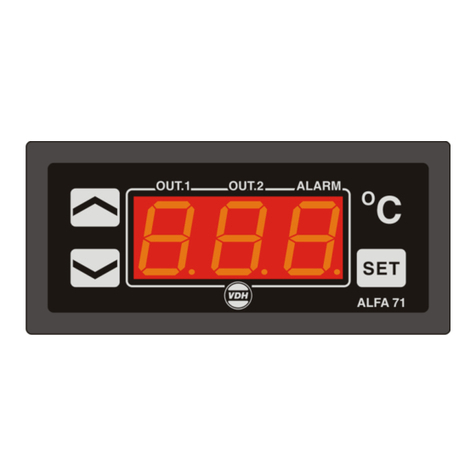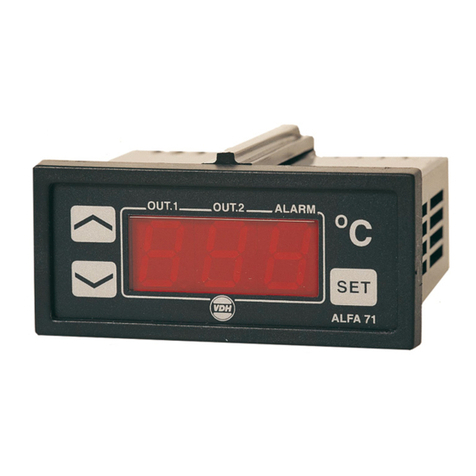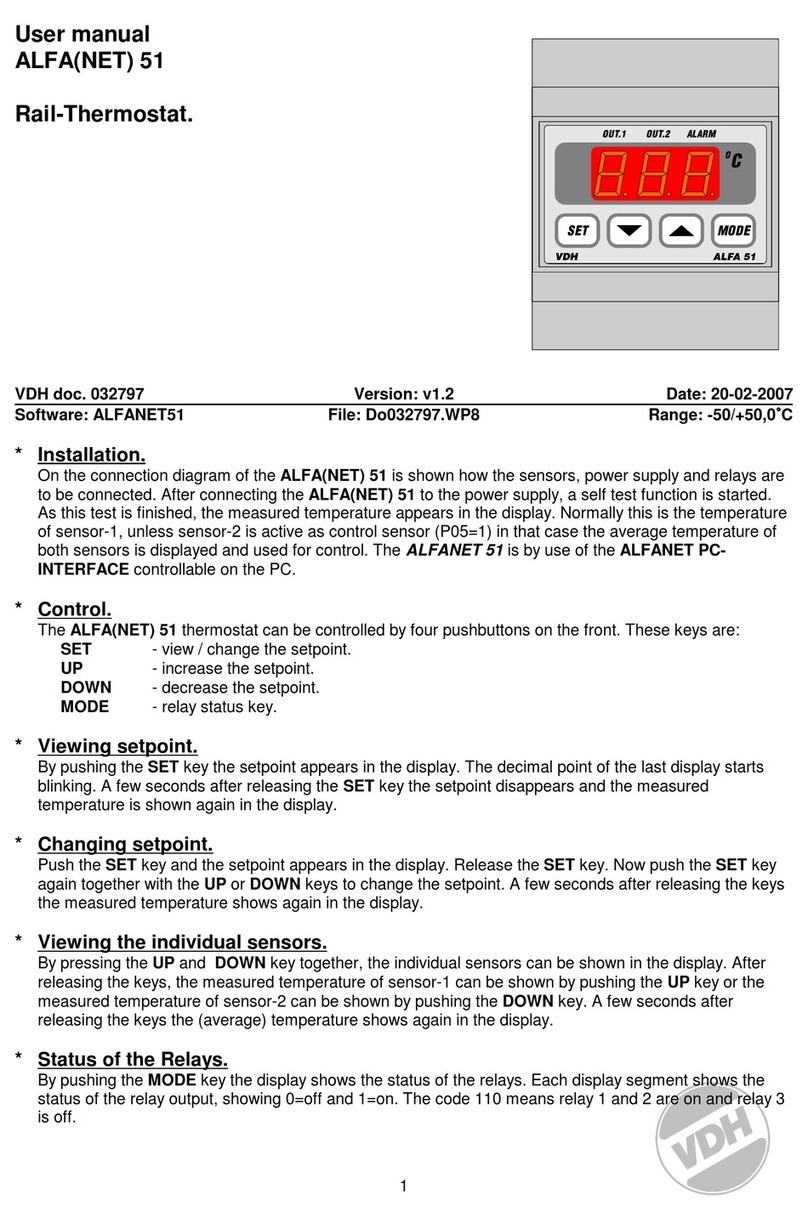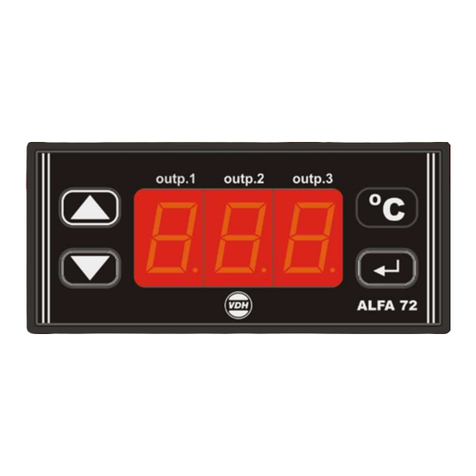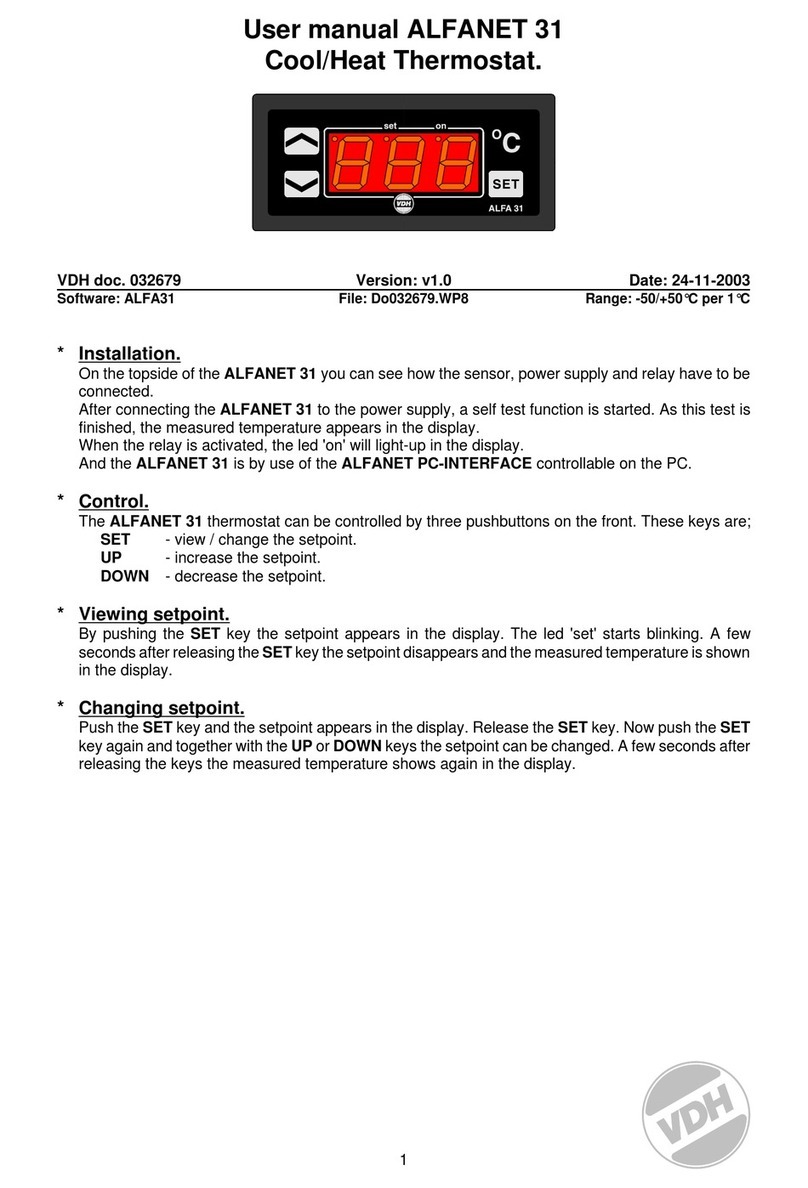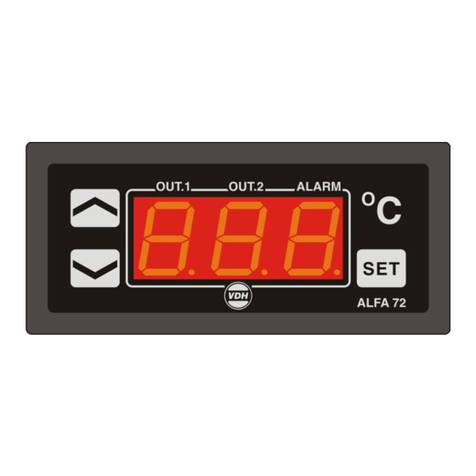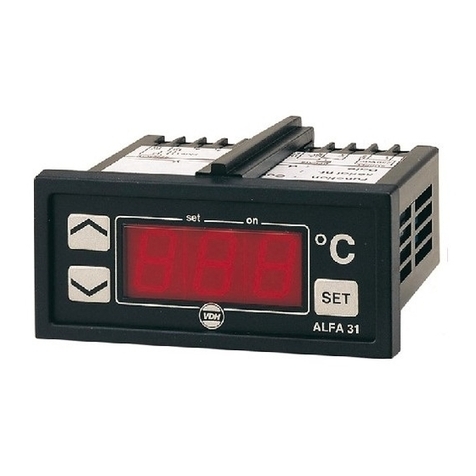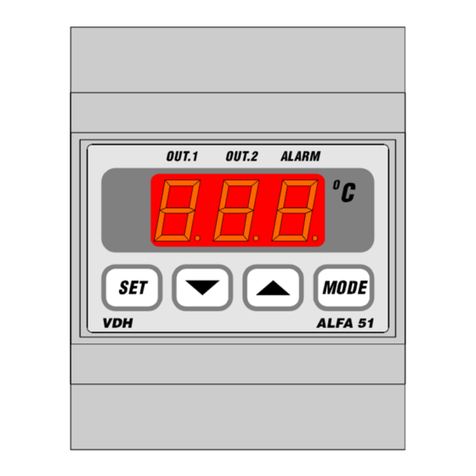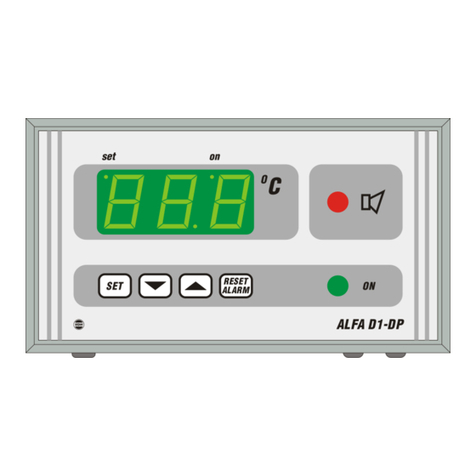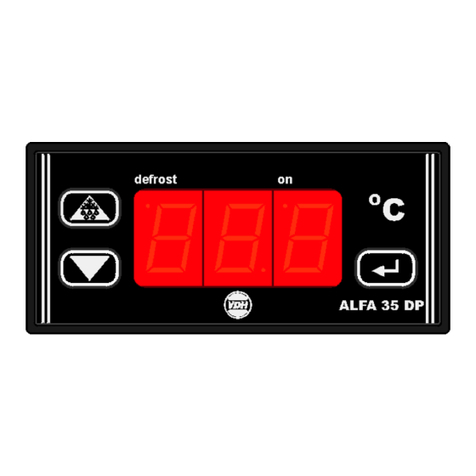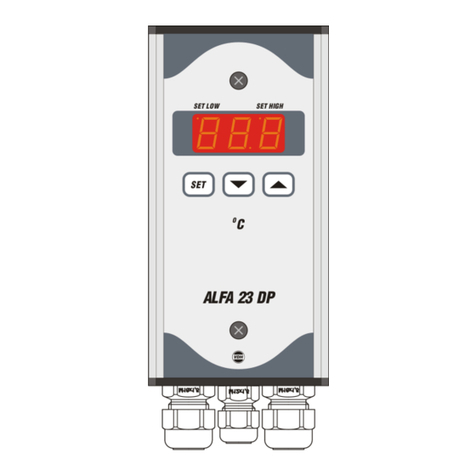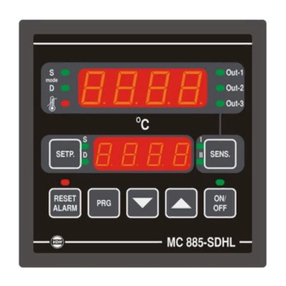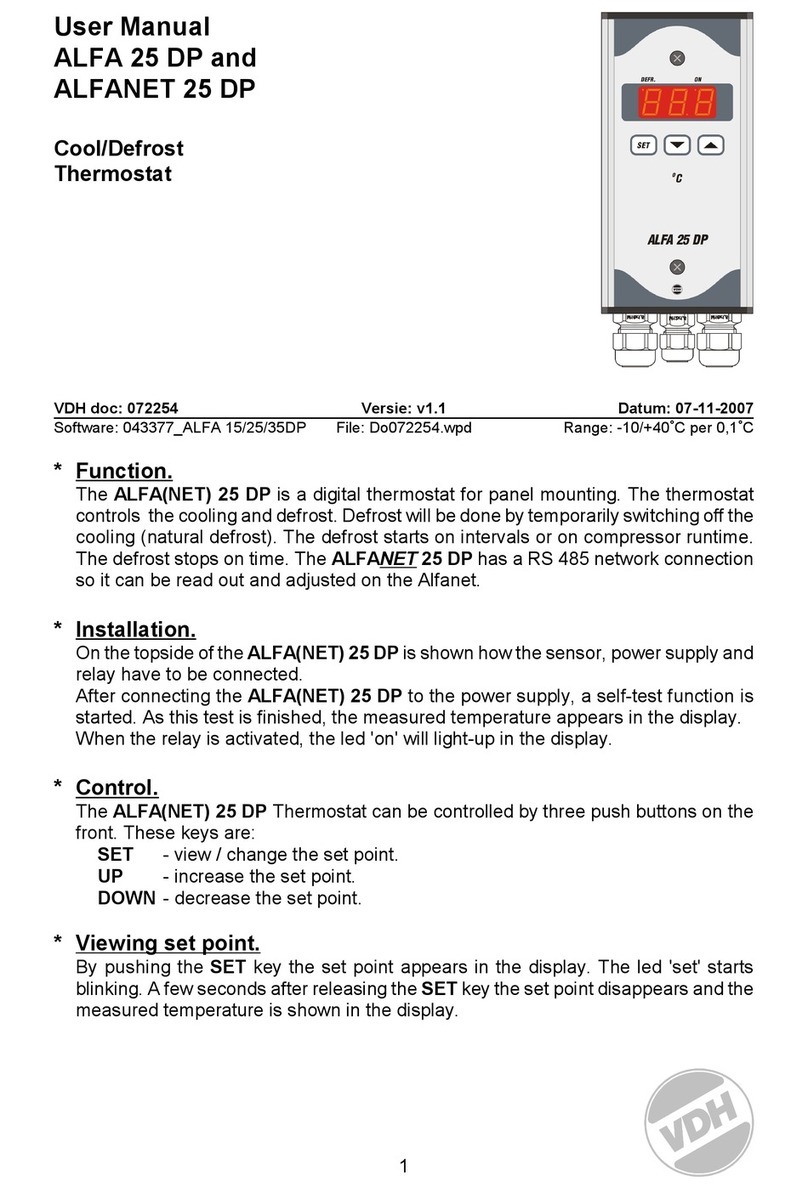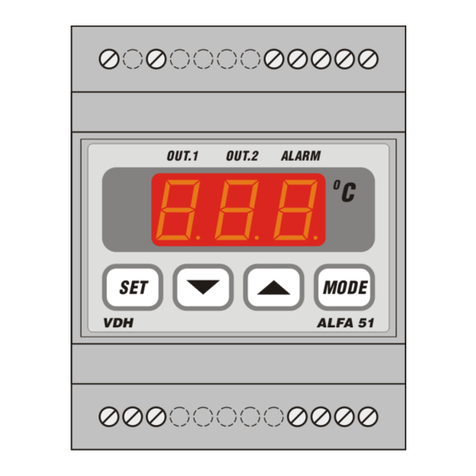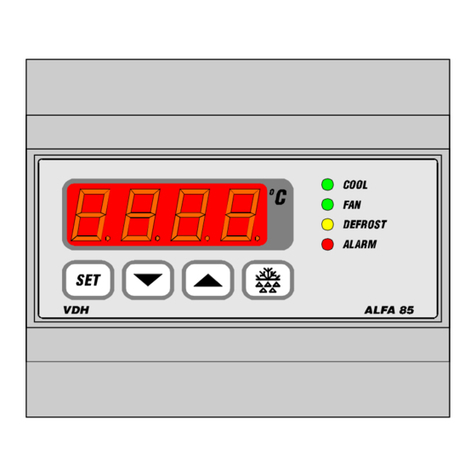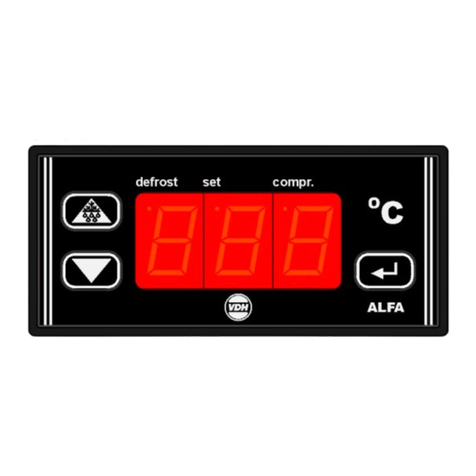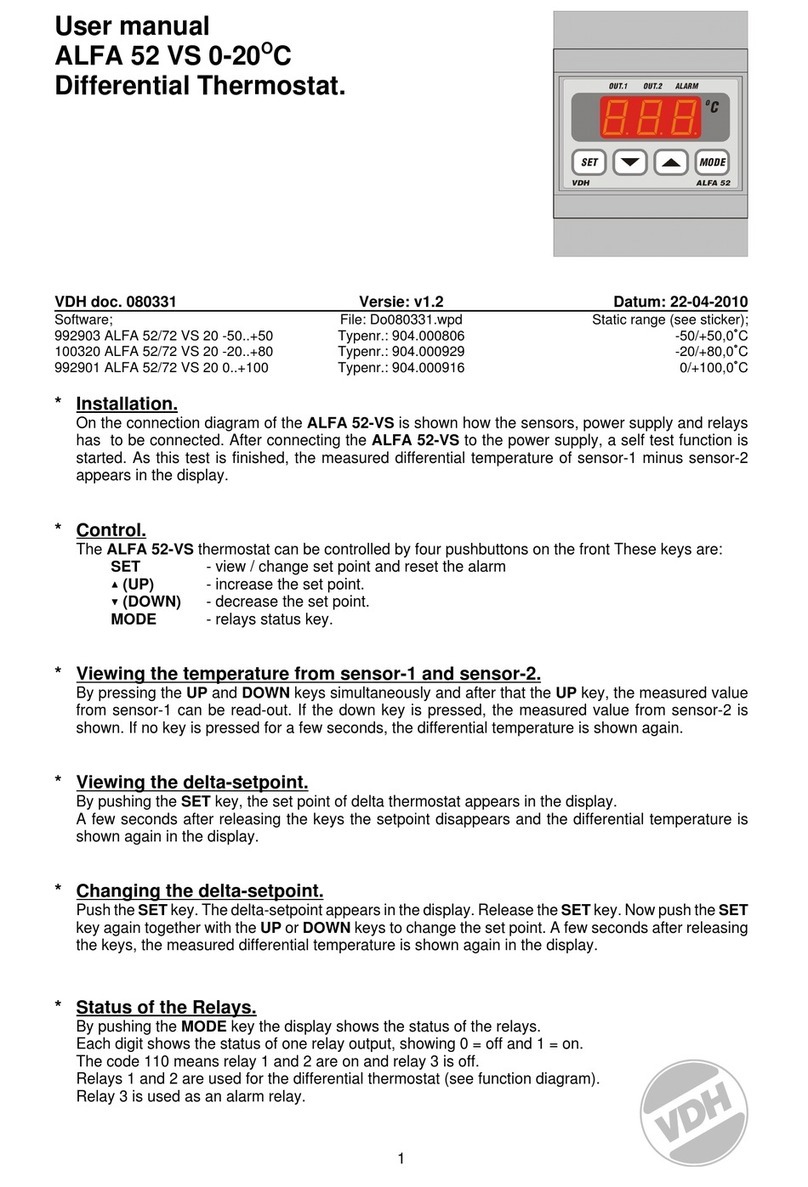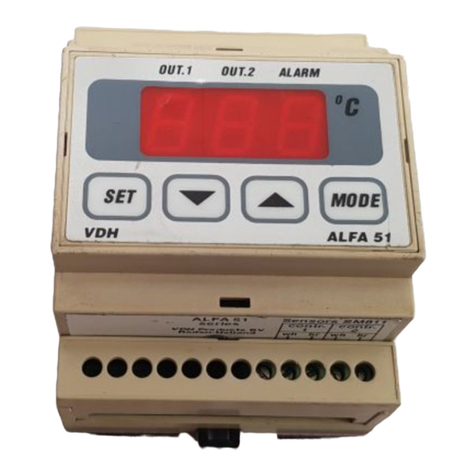
2
*Actions of the alarm functions.
TheALFANET 33 alarm thermostat has a minimum alarm and a maximum alarm both with there own
setpoint. We can choose two different kinds of alarms (PARAMETER 27) namely:
watchdog alarm (relay normally activated, with alarm it falls off and the led 'alarm' burns. So on
power failure the alarm relay also falls off.)
or a regulated alarm(relay normally not activated, with alarm the relay will be activated and the led
'alarm' will burn.
WithPARAMETER 28 we can choose auto reset alarm or a hold alarm, after temperature recovering.
Also it is possible to give both setpoints their own offset and differential see function diagram. Each
alarm can be set at an alarm-delay time (PARAMETER 23 and 24) when the temperature will give
an alarm the led 'alarm' first starts to blink. If the temperature will recover within the delay time, no
alarm occurs. If an alarm will come through after the delay time the led 'alarm' burns continuously and
thedisplay alternates between the temperature and 'H' for high-alarm (max.) or 'L' for low-alarm (min.)
to indicate the alarm.
To reset an alarm, press the SET key.
*Setting internal parameters.
Next to the adjustment of the setpoint, some internal settings are possible like differential, sensor-
offset, setpoint range.
By pushing the DOWN key more than 10 seconds, you enter the 'internal programming menu'. In the
left display the upper- and lower-segment are blinking. With theUP and DOWN keys the required
parameter can be selected (see the parameter table). If the required parameter is selected, the value
can be read-out by pushing the SET key. Pushing the UP and DOWN keys, allows you to change the
valueof this parameter. If after 20 seconds no key is pushed, the ALFANET 33 changes to it's normal
operation mode.
*Sensor adjustment.
The sensor can be adjusted by using the Sensor Offset (parameter 04). Indicates the ALFANET 33
e.g. 2°C too much, the Sensor Offset has to de decreased by 2°C.
*Error messages.
In the display of the ALFANET 33 the following error messages can appear:
E1 - Sensor broken. Solution:
- Check if the sensor is connected correctly.
- Check the sensor (1000Ωat 25°C).
- Replace the sensor.
EE - Settings are lost. Solution:
- Re programme the settings.
-L- - In case of sensor short-circuit the display alternates between error-code E1
and -L-, as indication for a short-circuit sensor.
-H- - In case of open-circuit sensor the display alternates between error-code E1
and -H-, as indication for a open circuit sensor.












